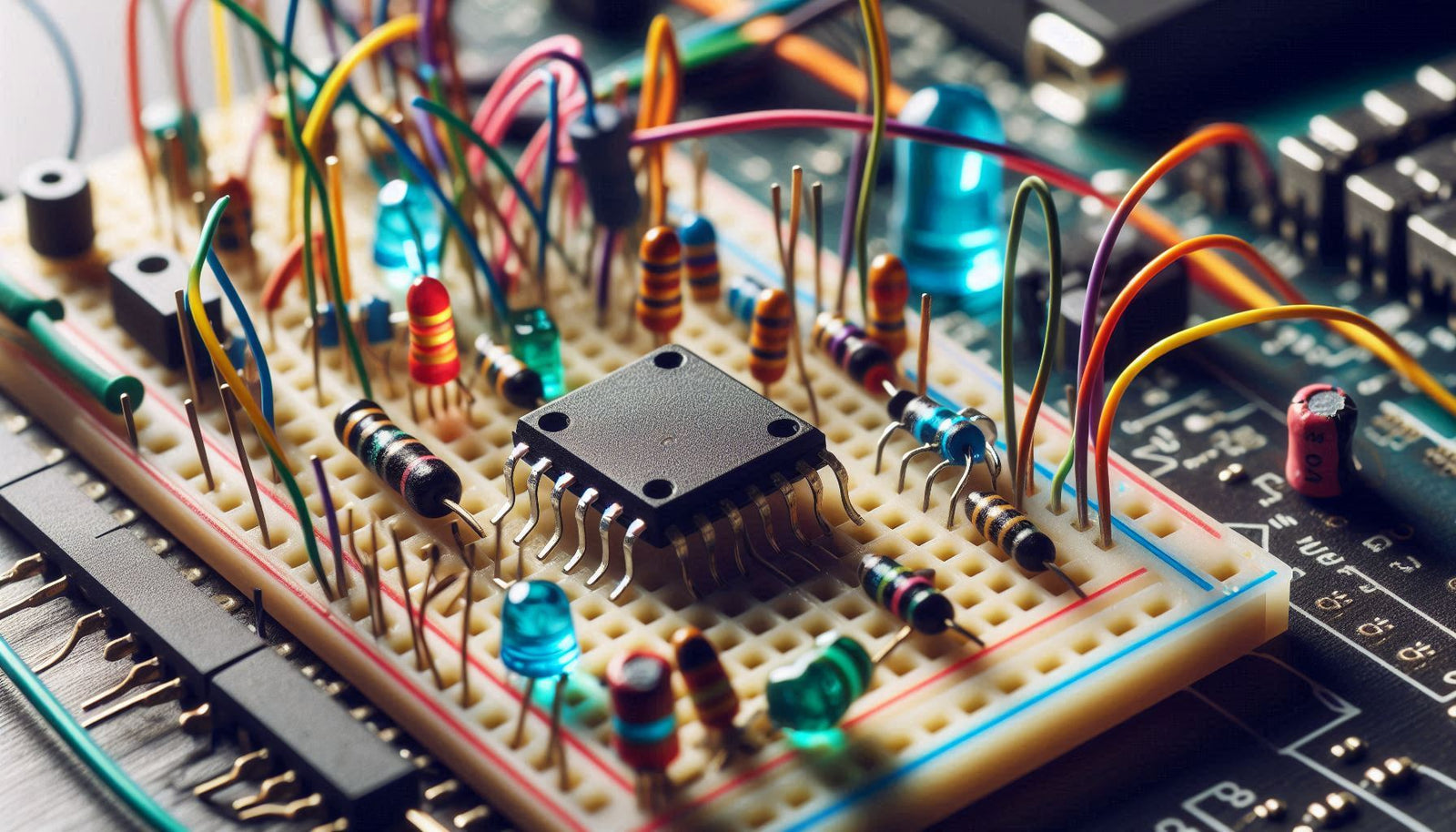A microcontroller is a compact, integrated circuit designed to perform specific operations in embedded systems. Think of it as a tiny computer that controls a device's functions. Unlike a full-fledged computer with a wide range of capabilities, a microcontroller is built for specialized tasks like controlling a motor, measuring sensor data, or managing user interfaces like buttons and displays.
Key Components of a Microcontroller
Microcontrollers typically consist of several essential components:
- Central Processing Unit (CPU): The brain of the microcontroller that executes instructions.
-
Memory:
- RAM (Random Access Memory): Temporarily stores data during execution.
- Flash/EEPROM: Non-volatile memory used to store the program code and settings.
- Input/Output Ports (I/O): Allow interaction with external devices like sensors, buttons, and LEDs.
- Timers and Counters: Handle tasks like generating delays or counting external events.
- Analog-to-Digital Converter (ADC): Converts analog signals (e.g., from sensors) into digital values the CPU can process.
- Peripherals: Modules like UART, I2C, or SPI, which allow communication with other devices.
Microcontroller vs. Microprocessor
While they sound similar, microcontrollers and microprocessors serve different purposes. A microprocessor (like the one found in computers) is optimized for processing complex tasks and running multiple applications. In contrast, a microcontroller is designed for simplicity and efficiency, handling repetitive or specific tasks like managing the speed of a motor or reading temperature data from a sensor.
Common Uses of Microcontrollers
Microcontrollers are everywhere in modern electronics. Some common applications include:
- Home Appliances: Devices like washing machines, microwaves, and air conditioners use microcontrollers to manage various functions.
- Automobiles: They control systems such as the engine, airbags, and even entertainment units.
- Robotics: Microcontrollers help control motors, sensors, and actuators in robotic systems.
- IoT Devices: Many Internet of Things (IoT) devices rely on microcontrollers to connect to the web and perform specific tasks like monitoring home security or tracking fitness data.
- Toys and Gadgets: Many electronic toys, remote-controlled vehicles, and simple consumer electronics utilize microcontrollers.
Popular Microcontroller Platforms
There are various microcontroller platforms, some of the most popular include:
- Arduino: A user-friendly platform for beginners and hobbyists, featuring easy-to-program boards and a large community.
- Raspberry Pi Pico: A newer addition from the Raspberry Pi foundation that combines low cost with powerful features.
- ESP32: Known for its built-in Wi-Fi and Bluetooth capabilities, this microcontroller is widely used in IoT applications.
- AVR and PIC Microcontrollers: Used in more specialized and industrial applications.
How Microcontrollers Work
A microcontroller follows a fetch-execute cycle. Here's how it works in a simplified process:
- Fetch: The microcontroller retrieves an instruction from memory (usually from the flash memory where the program is stored).
- Decode: The CPU decodes the instruction to understand what operation needs to be performed.
- Execute: It performs the operation, which could be anything from reading sensor data to turning on an LED or sending data to another device.
The microcontroller constantly loops through this process, efficiently executing instructions as long as it is powered.
How to Get Started with Microcontrollers
If you're new to microcontrollers, here's a simple path to follow:
- Choose a Development Board: Arduino and ESP32 are great starting points due to their large support communities and simple programming environments.
- Install the IDE (Integrated Development Environment): For Arduino, install the Arduino IDE, or for ESP32, use PlatformIO or Arduino IDE.
- Learn Basic Coding: Microcontrollers are typically programmed in C or C++. Start with simple projects like blinking an LED or reading a button press.
- Explore More Projects: Once you get comfortable, try advanced projects like controlling motors, connecting to Wi-Fi, or reading sensor data.
Summary
A microcontroller is a powerful, yet affordable, tool that controls many of the devices we interact with daily. With a bit of practice, you can use microcontrollers to bring your own projects to life, from simple DIY gadgets to complex IoT systems.

